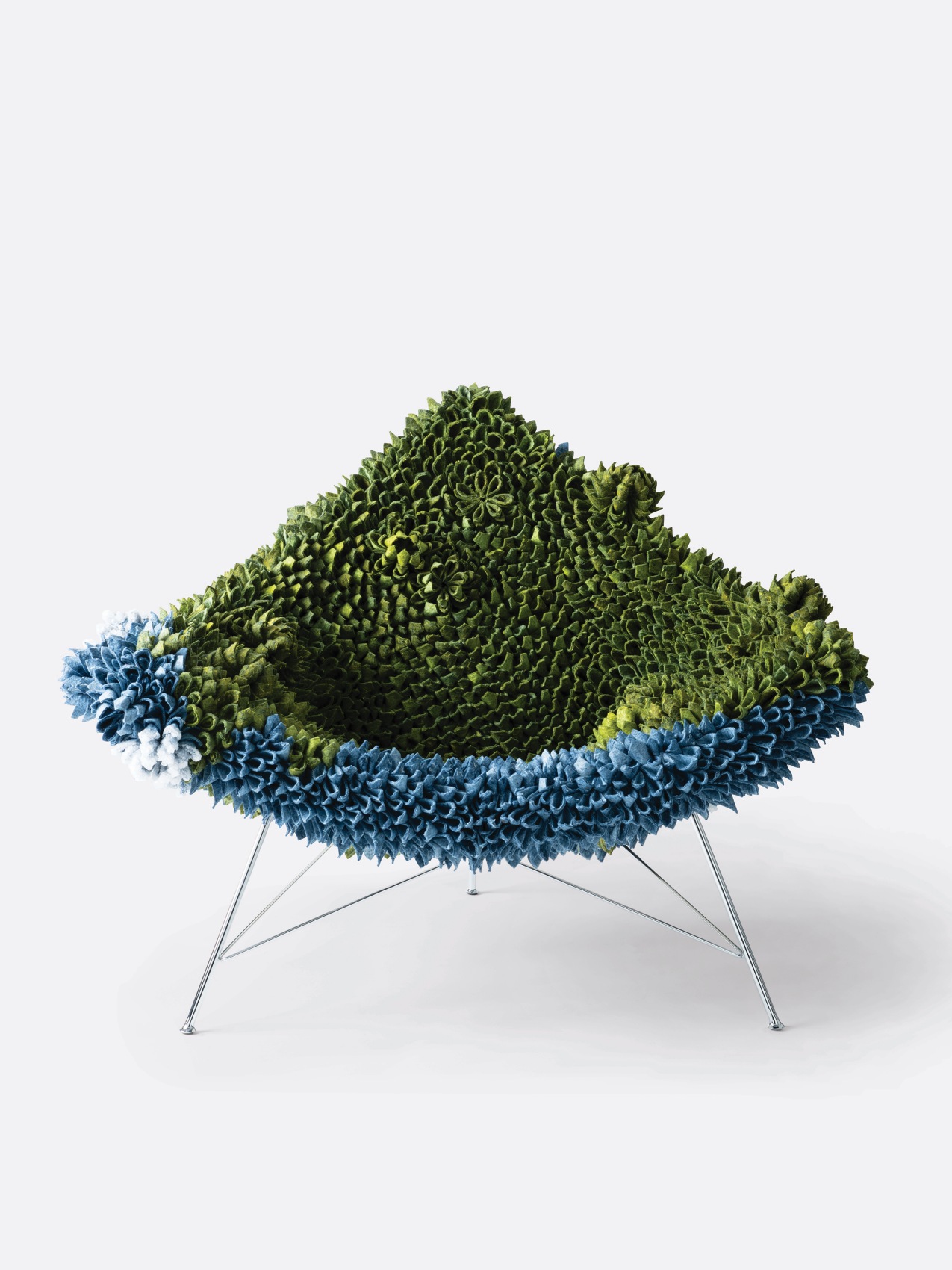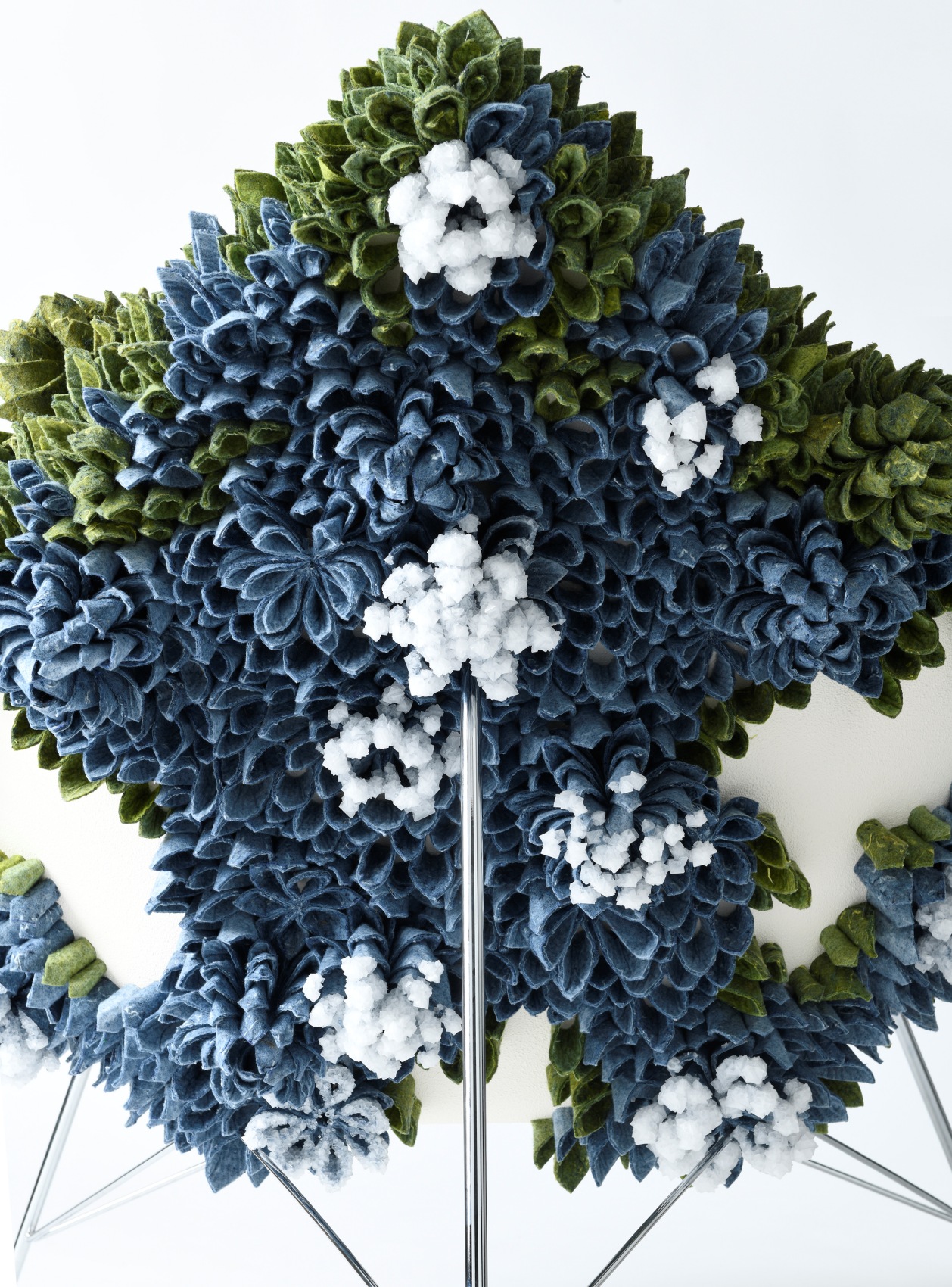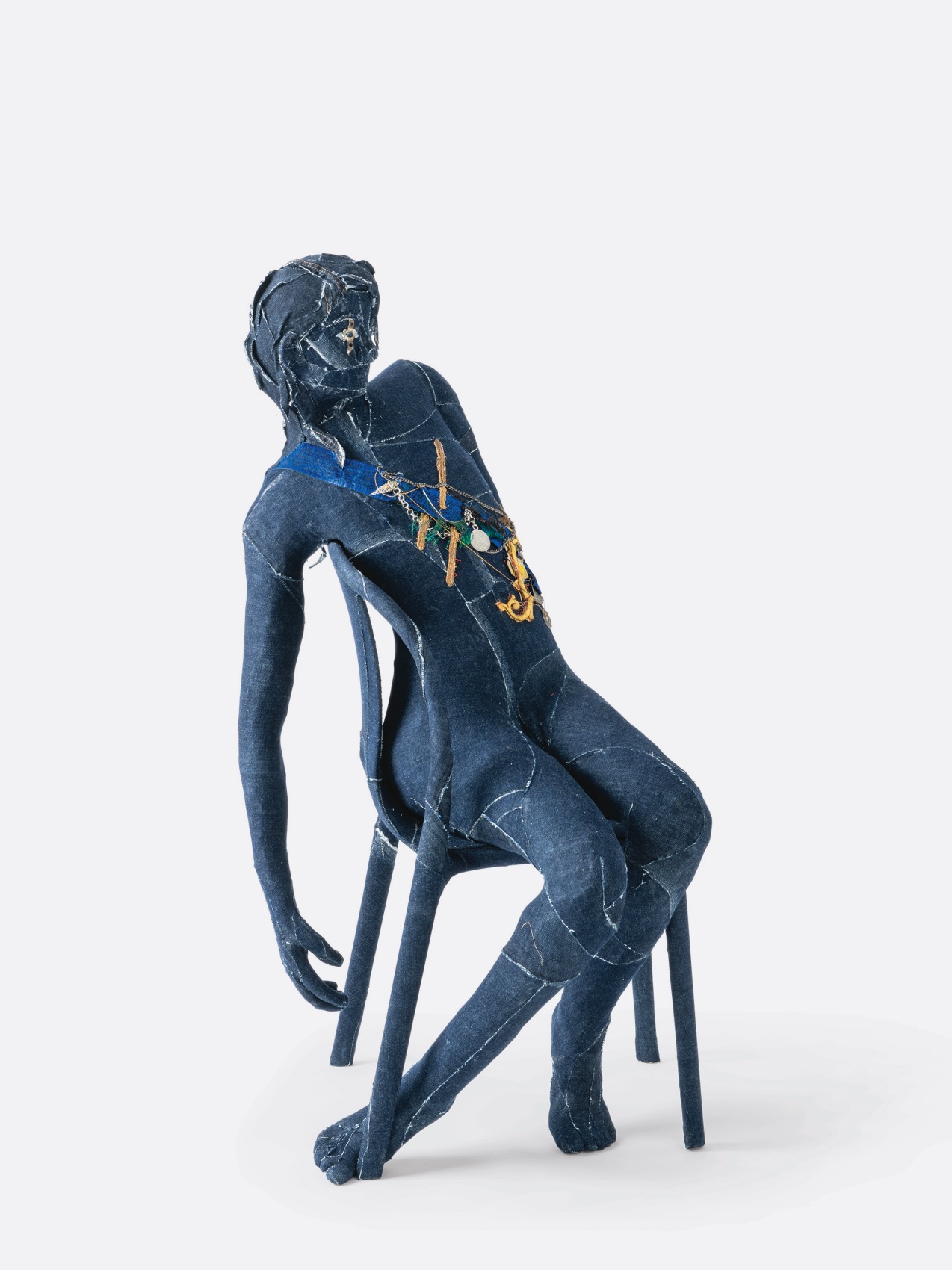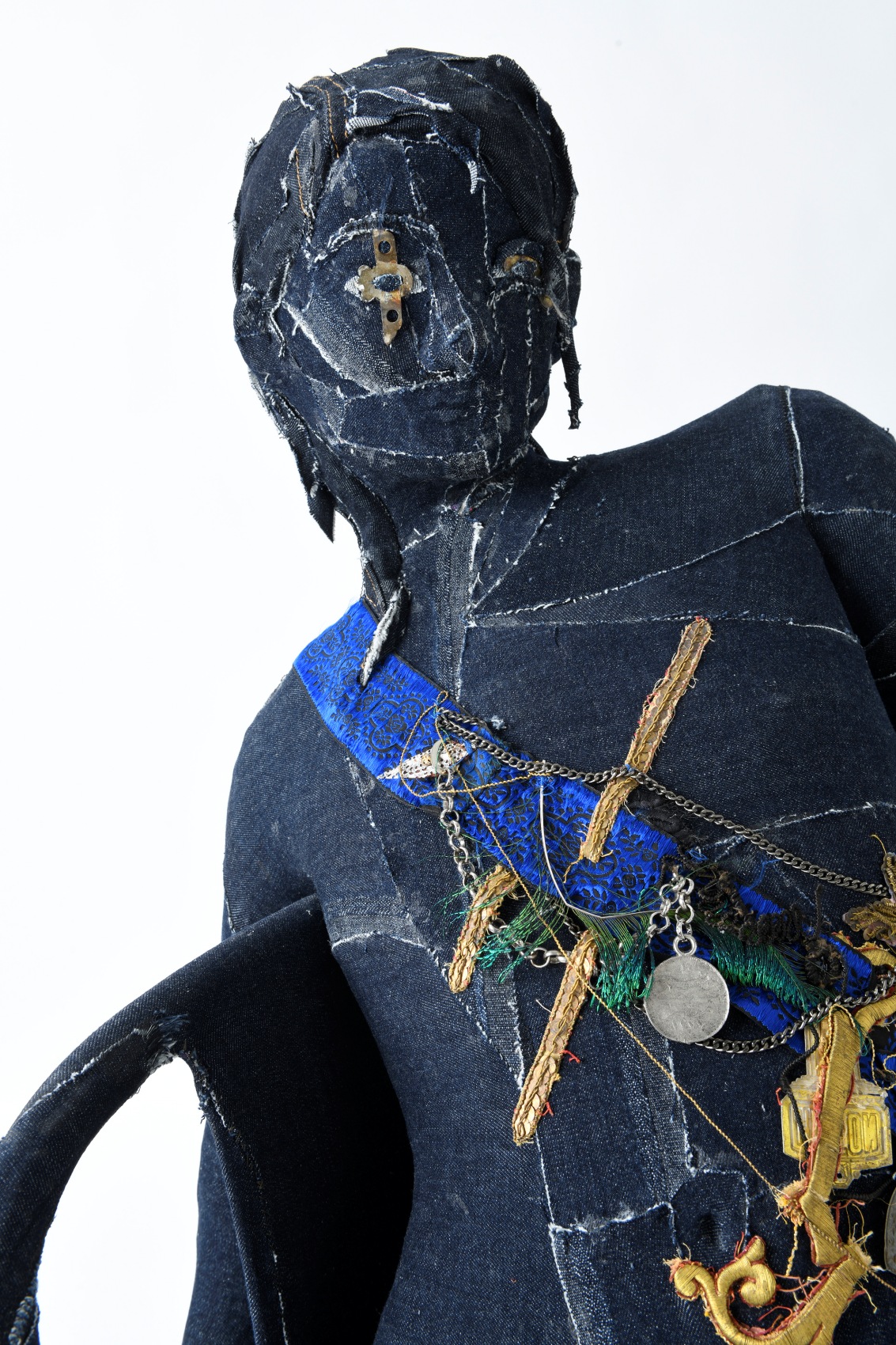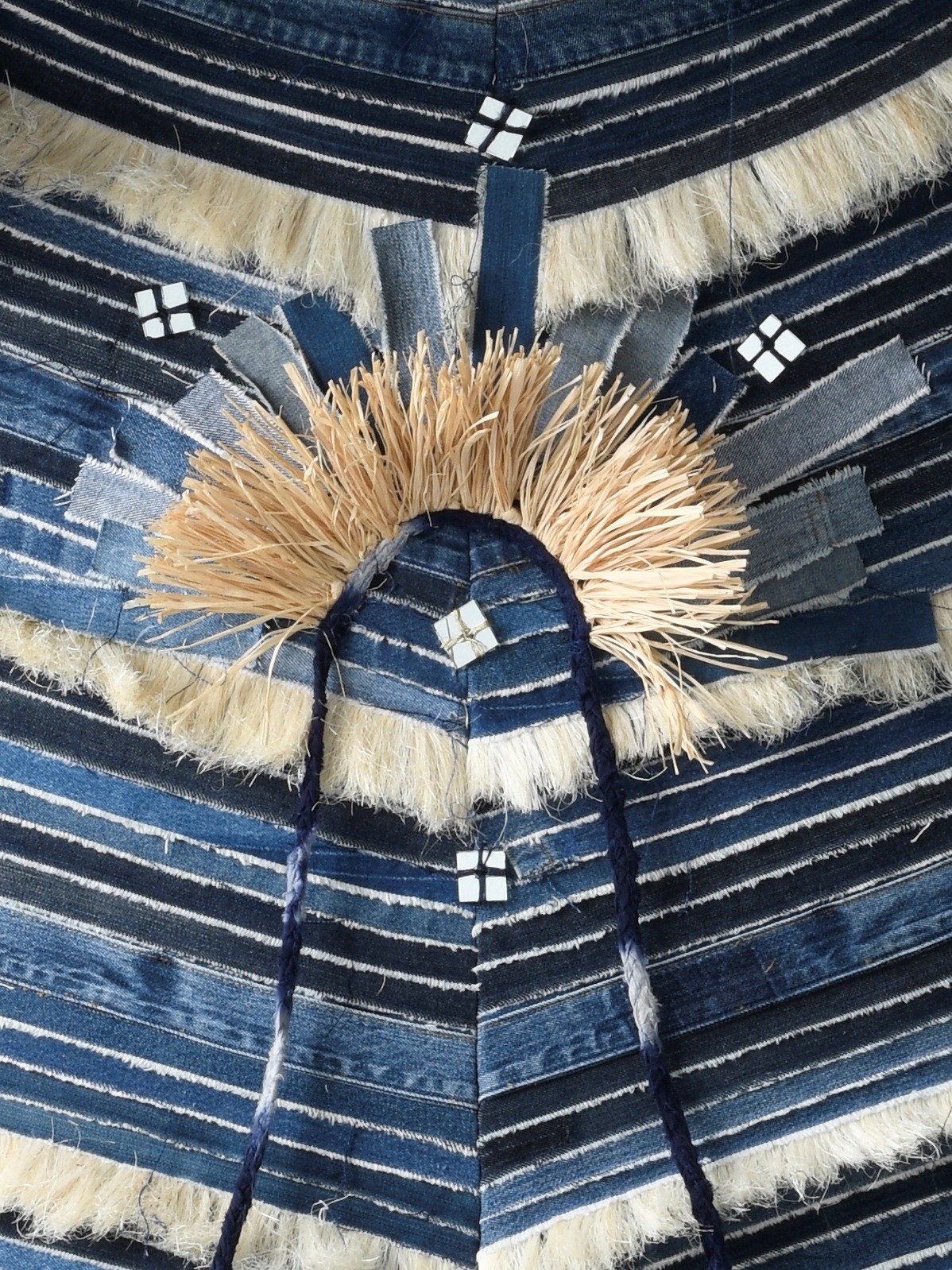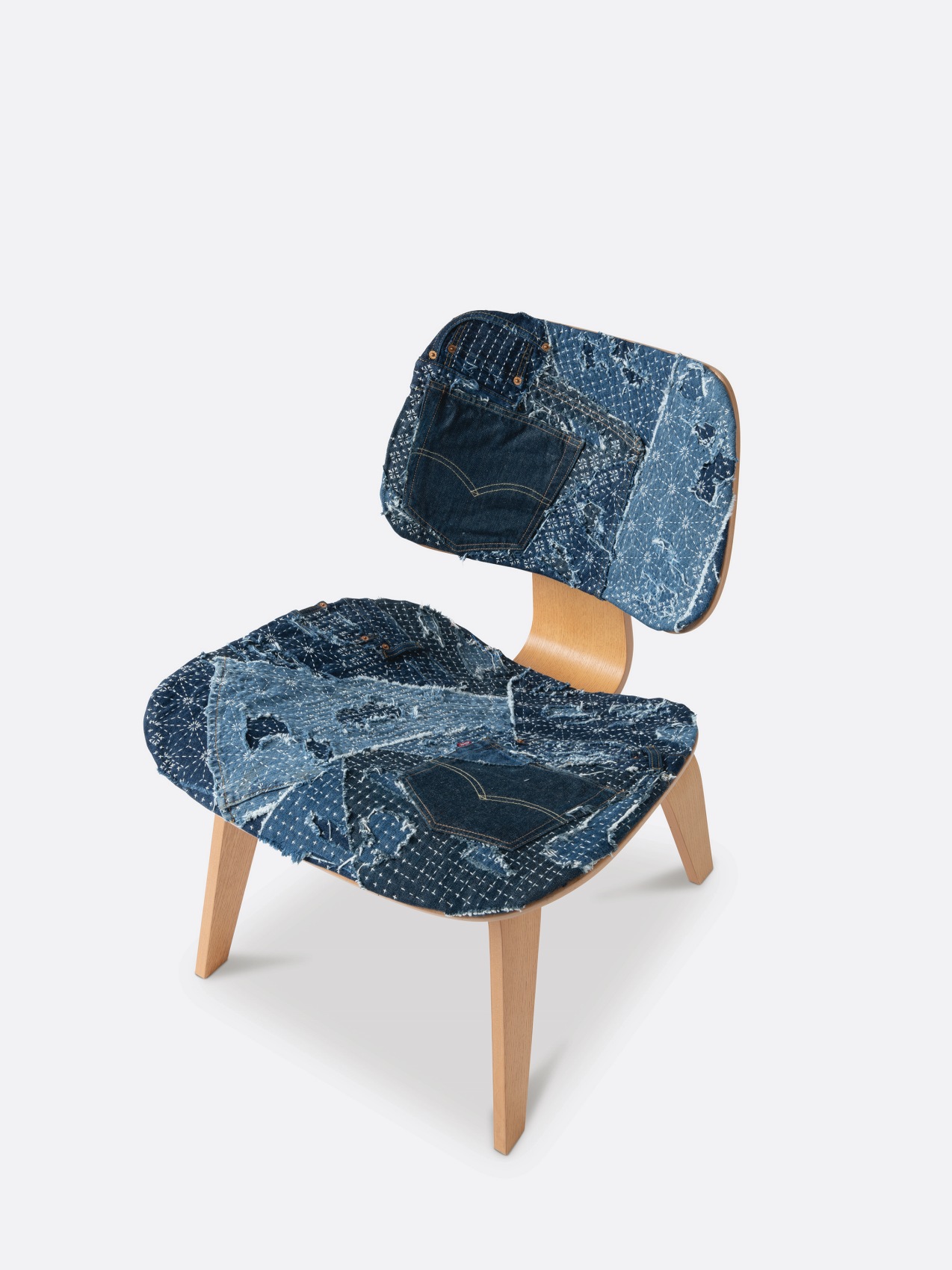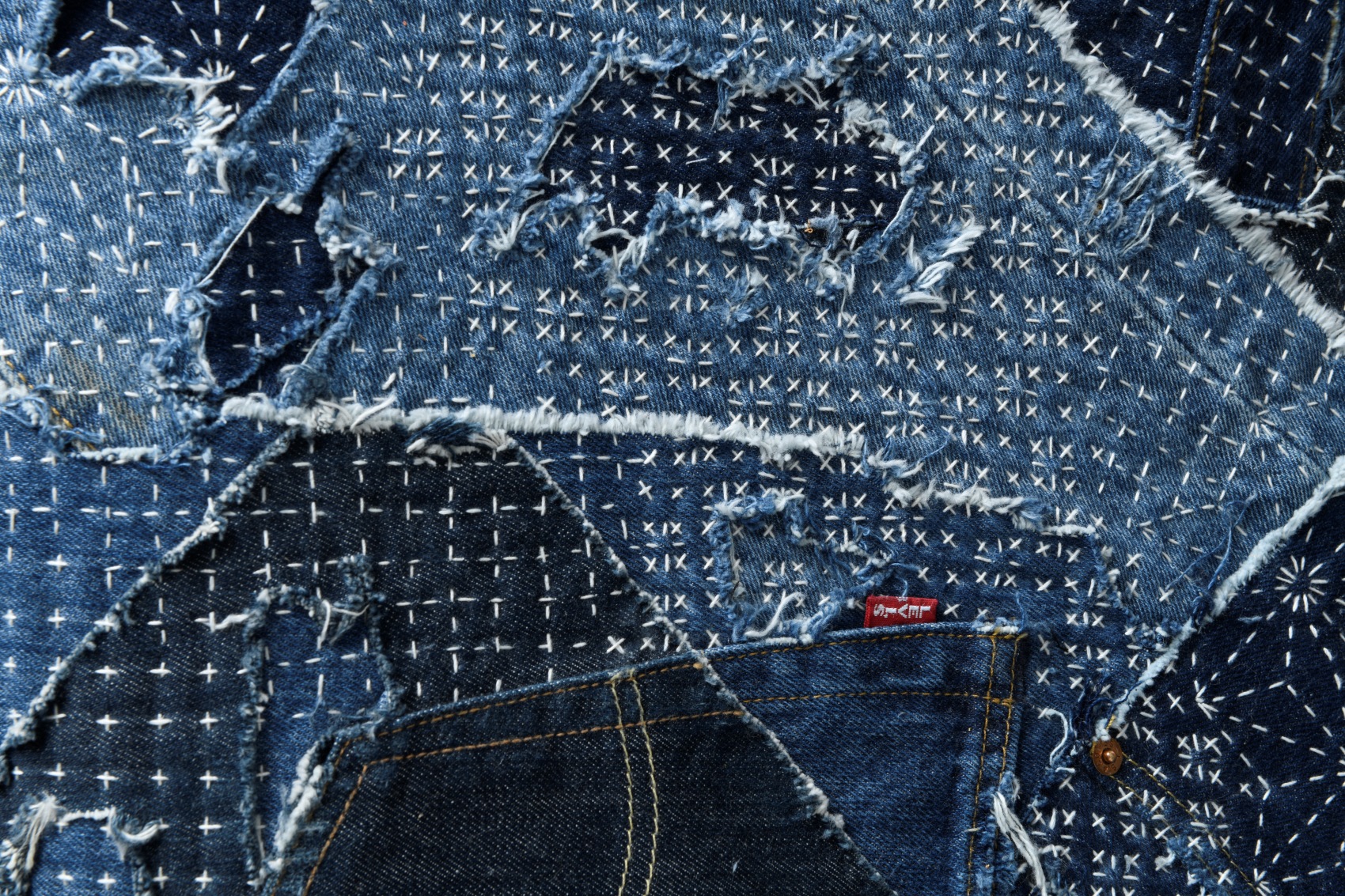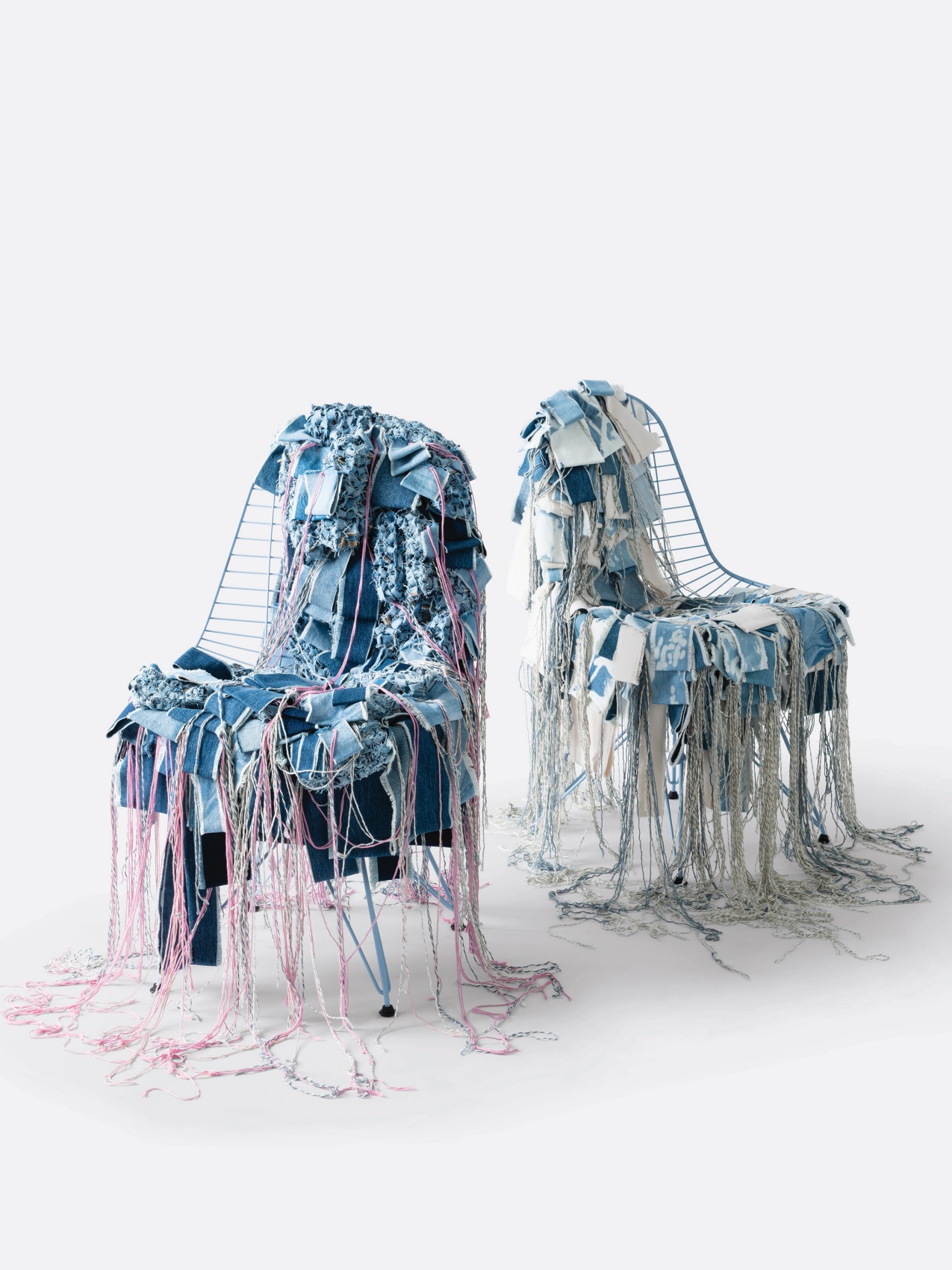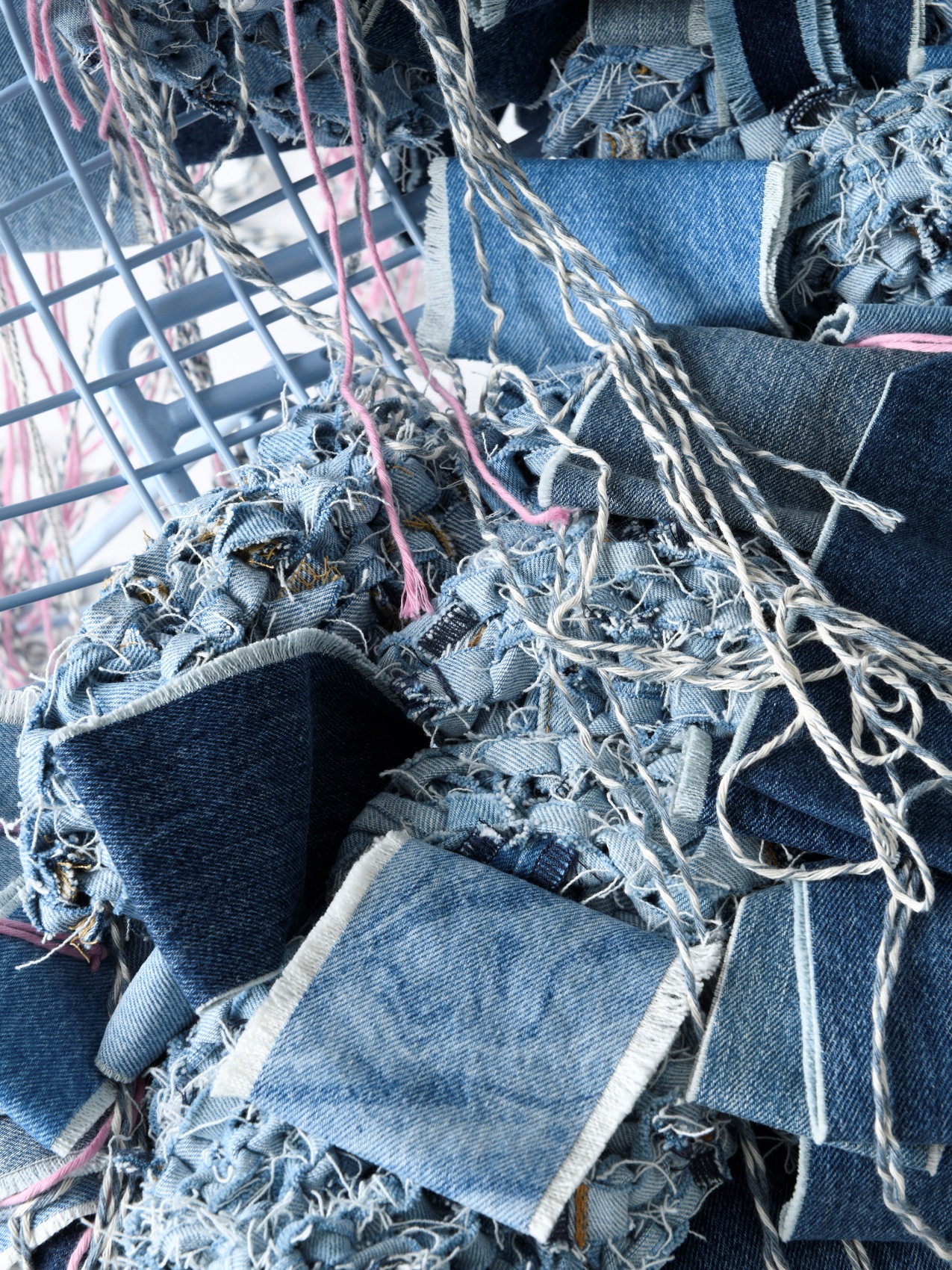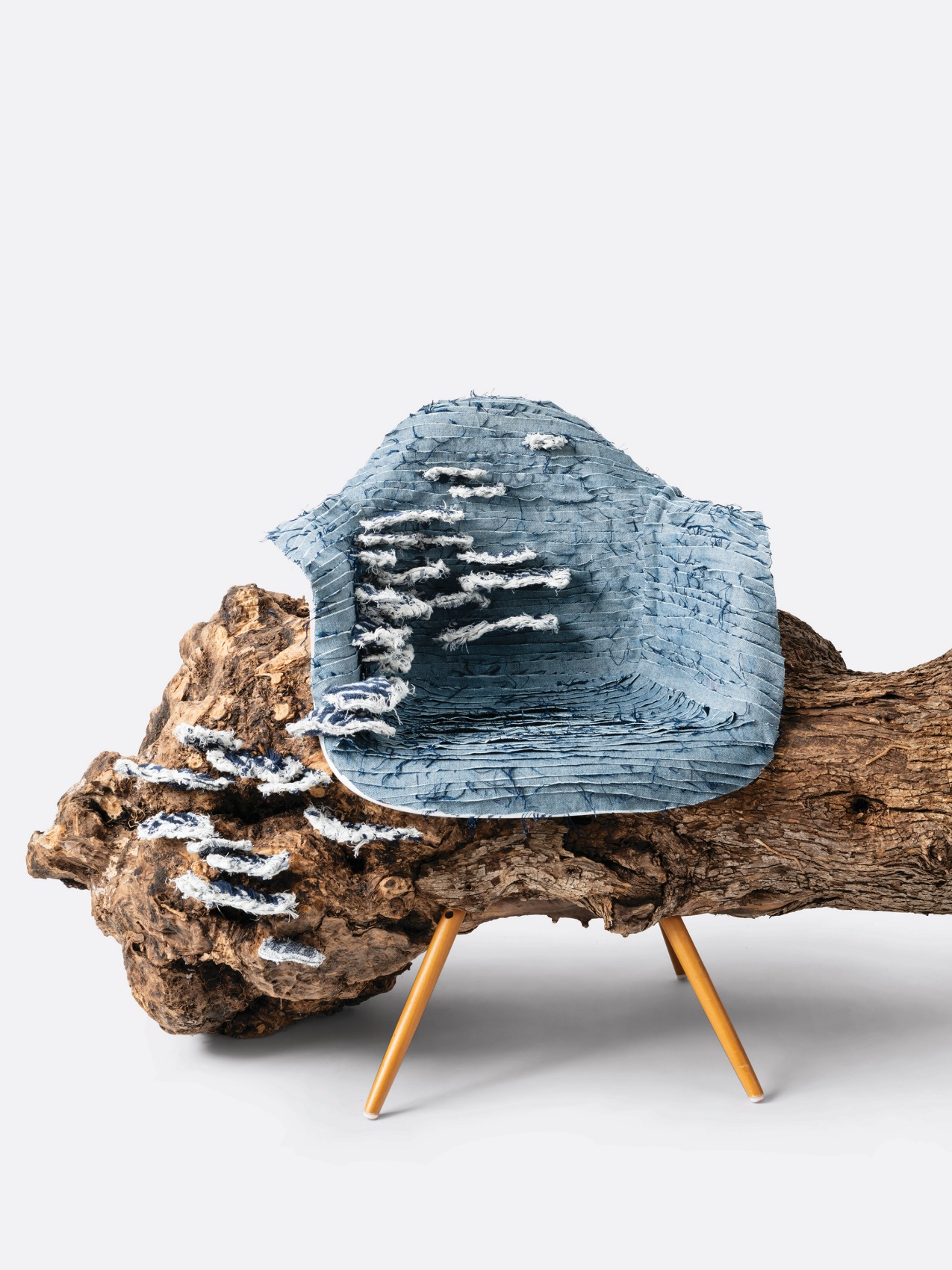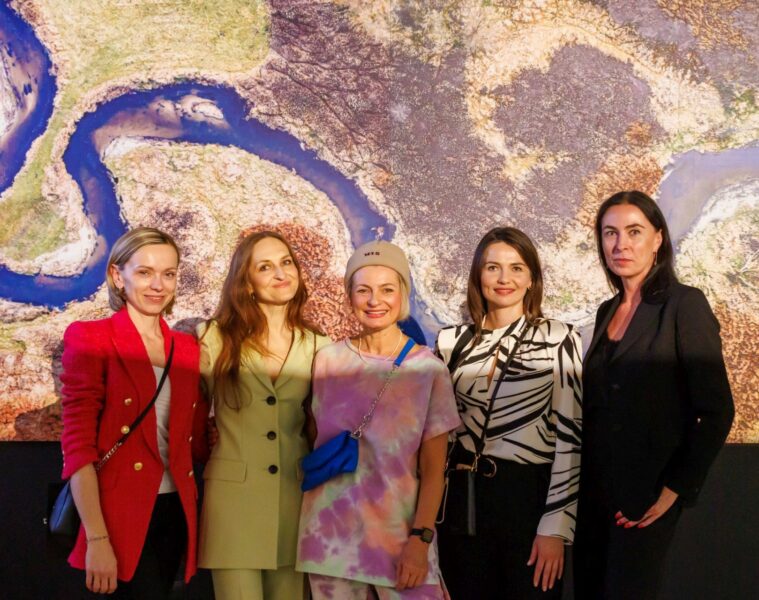They are undisputed icons of design. Vitra furniture can be seen in museums and art galleries all over the world. As part of the unusual ‘Icons Re/Outfitted’ campaign, selected designers redesigned used Vitra furniture using scraps of Levi’s denim material. In this way, old objects were given new life and returned in style!
The unusual furniture can be seen at the exhibition ‘Icons Re/Outfitted’, which runs from 21 to 29 October in a special space in a former carpenter’s workshop as part of Dutch Design Week in Eindhoven. The event is organised by The Visionary Lab, Vitra and the brand Levi’s, who invited selected fashion designers and designers to collaborate. Their task was to redesign used Vitra chairs using recycled fabrics. The designers used Levi’s denim and showed the great potential of upcycling
The project is a response to the problem of increasing textile waste. The organisers want to spread awareness among the public and encourage us to use the items we already own responsibly. The objects collected at the exhibition are proof of how to give old furniture a new life in a creative way. The designers have transformed iconic Vitra furniture, including chairs by the likes of Charles & Ray Eames, Verner Panton and George Nelson, among others. Importantly, the designers worked not with new, but with second-hand furniture. The result of their work is a series of chairs decorated with (also used) denim from the brand Levi’s, which this year celebrates the 150th anniversary of the model of its iconic 501 jeans
Design for a sustainable future
Artists from around the world designed their designer chairs, including Nkwo Onwuka, Hannah Brabon, Kelly Konings, Tim Dekkers, Sophie Cagniart, Barbara Polderman, Sarmite Polakova and Norman Monsanto. The artists created using a variety of techniques. One can point to digital 3D weaving, reaching for biotextiles or recycled denim felt from the socially responsible i-did factory. However, their greatest value is their handiwork, which has allowed them to create works of art
Our mission is to redefine the concept of waste and reveal the beauty hidden in unexpected places. ‘We are extremely proud to have realised this artistic project,’ explains The Visionary Lab studio team, which is dedicated to creating new things from textile waste
The exhibition ‘Icons Re/Outfitted’ raises awareness of the enormous potential of denim and the possibilities of reusing it. Used material is not a waste, but a raw material that allows you to create something new, minimising damage to the environment
We are excited about this artistic exploration of circular design. Icons Re/Outfitted has resulted in unique pieces that creatively demonstrate how circular design principles and innovative techniques can be applied to minimise waste,” adds Torsten Stadles, Regional Leader Benelux & France for Vitra
New life for Levi’s denim
By combining Vitra’s famous design and used Levi’s fabrics, the artists have created new objects that encourage us to take a creative look at old materials and denim in particular. – ‘ We are delighted to be part of Icons Re/Outfitted, which not only promotes innovation and craftsmanship, but also shows how the life of our textiles can be prolonged through innovative design methods,’ said Anit Van Eynde, Vice President Marketing and BX Northern Europe at Levi Strauss & Co. What designs have the artists created? Take a look!
The Coconut Chair Re/Outfitted
Concept: The Visionary Lab
Artist: Tim Dekkers
Chair: used Coconut Chair, George Nelson, Vitra
Material: recycled denim from Levi’s
Denim felt production: i-did
The original Coconut Chair for the Vitra brand was designed by George Nelson. Now its denim interpretation has been created by Tim Dekkers. The Dutch designer works on the borderline between fashion and art. In his work, he often experiments with natural materials, in particular ferns, bark and crystals
The chair he designed seems to be a piece of the forest. Dekkers used a waste-free cutting pattern and created ornaments with organic shapes. The ornaments are made from Levi’s denim felt, which was sourced from the aforementioned ‘i-did’ factory. The furniture looks as if it has been overgrown with moss. Intense colours were achieved using natural turmeric dye. The whole is topped off with details in the form of biodegradable crystals from organic cultivation
The Panton Chair Re/Outfitted
Concept: The Visionary Lab
Artist: Sarmite Polakova
Chair: used Panton Chair, Verner Panton, Vitra
Material: recycled denim from Levi’s
Recycled denim: i-did
This is our editors’ favourite piece of furniture from this list. The Panton Chair was designed by Verner Panton. Its upcycled version was prepared by Latvian designer Sarmite Polakova, who is famous for her experimental approach to designed objects. The designer surrounded the chair with a bio-textile fabric made from used denim. It is a lightweight and durable raw material whose appearance resembles suede. Polakova tightly wrapped the chair in fabric, which expands at the bottom and extends beyond the chair’s contour, creating a kind of carpet. A true work of art. Bravo!
The Belleville Chair Re/Outfitted
Concept: The Visionary Lab
Artist: Barbara Polderman
Chair: used Belleville Chair, Bouroullec, Vitra
Material: recycled denim from Levi’s
Looks weird? And a good thing too! The Belleville Chair was designed by the duo Ronan & Erwan Bouroullec. In the photos below, however, you can see a new version of the chair by Barbara Polderman. The artist is famous for creating sculptures decorated with fabric scraps. She has given a similar treatment to the Belleville chair, each piece of which is tightly surrounded by denim. In the central part, she placed a female figure also dressed in denim. The sculpture’s protagonist sits on the chair in an unusual position, which draws the eye and encourages viewers to reflect on the role that each of us can play in creating an environmentally friendly world
The Amoebe Chair Re/Outfitted
Concept: The Visionary Lab
Artist: Nkwo Onwuka
Chair: used Amoebe Chair, Verner Panton, Vitra
Material: recycled denim from Levi’s
Amoebe is an armchair that was designed by Verner Panton in 1970. The iconic design was created by Nkwo Onwuka, a fashion designer from Nigeria. The artist has had collections designed using leftover fabrics, so we are not surprised by her participation in the ‘Icons Re/Outfitted’ project
The chair, which is more than 50 years old, has been given a completely new look. Instead of a minimalist, single-colour block, we have a piece of furniture whose form resembles a throne. The artist decorated the armchair in her own characteristic way. The surface of the piece of furniture was covered with fragments of Levi’s jeans found in second-hand shops in the Nigerian city of Lagos. In addition, the designer placed denim beads and sisal tassels on the surface of the furniture. All elements have been symmetrically arranged
The Plywood Group LCW Chair Re/Outfitted
Concept: The Visionary Lab
Artist: Sophie Cagniart
Chair: used Plywood Group LCW Chair, Charles & Ray
Eames, Vitra
Material: recycled denim from Levi’s
French designer Sophie Cagniart proves in her work what a graceful material denim is. On her Instagram you can find photos of trousers, blouses, jackets and bags that she has sewn from small fragments. Her designs combine vintage elements with modern design. To celebrate the 150th anniversary of Levi’s 501 jeans, the designer decorated a second-hand Plywood Group LCW Chair by Charles and Ray Eames with fragments of the iconic ‘five-hundred-one’. The artist used traditional Japanese embroidery techniques such as sashiko and boro to create the chair. The craftsmanship can be seen well in the detail photos
The Wire Chair Re/Outfitted
Concept: The Visionary Lab
Artist: Hannah Brabon
Chair: used Wire Chairs, Charles & Ray Eames, Vitra
Material: recycled denim from Levi’s
The original Wire chair design dates back to 1951. Charles & Ray Eames designed a modern piece of furniture with a seat and back made of mesh. More than seventy years later, the young designer Hannah Brabon has produced a different version of it. The London-based designer creates her collections from denim offcuts. In her interpretation, the Wire chair has become an art installation. Using various techniques, Brabon covered the chair with multiple layers of fabric. Each piece was hand-stitched and woven into the mesh of the furniture. The choice of colours was not by chance. One of the chairs is based on dark-dyed fabrics, the other is kept in light tones
The Eames Shell Chair DSW Re/Outfitted
Concept: The Visionary Lab
Artist: Norman Monsanto, Kelly Konings
Chair: used Shell Chair DSW by Charles & Ray Eames from Vitra
Material: Denim and discontinued yarn from Levi’s
The Eames Shell Chair is one of the most iconic seats in the Vitra portfolio. Its design was so versatile that, over the years, individual elements began to be replaced in it to respond to new needs. Instead of traditional legs, you can buy a version with rocking legs and choose among different backrest variations
Norman Monsanto, who is an architect, treated the chair in an unusual way. The Dutchman transformed the chair into a sculptural masterpiece. The furniture has been ‘sunk’ into the trunk of an olive tree, which is a reference to the tree as the original form of the seat. A highlight is the visual treatment in the form of ‘mushrooms’, which were made of denim and applied to both the chair and the log. In this way, the architect has united what is the work of man’s hands with what nature has created
Eames Lounge Chair Re/Outfitted
Concept: The Visionary Lab
Artist: Kelly Konings
Chair: used and deconstructed Eames Lounge Chair, Vitra
Material: discontinued yarn from Levi’s
The Lounge Chair by Vitra is undoubtedly one of the most iconic pieces of furniture in the history of global design. It was designed by Charles & Ray Eames as early as 1956. Despite the passage of time, this piece of furniture still graces the interiors of new flats and homes, and can be seen on the cover of interior design magazines
As part of the ‘Icons Re/Outfitted’ project, Swedish fashion designer Kelly Konings covered the furniture with second-hand fabric – a discontinued yarn from Levi’s. The artist specialises in 3D weaving techniques and the clothes she designs do not generate waste, so she has meticulously used every scrap of available fabric. Kelly Konings created the illusion of holes and took care to create an aged effect. In addition, she used a special weaving technique that allowed her to achieve a gradient effect from blue to almost pure white without resorting to bleach
source: press materials
Read also: Furniture | Art | Events | Fashion | Trivia | whiteMAD on Instagram
Sponsored article.


